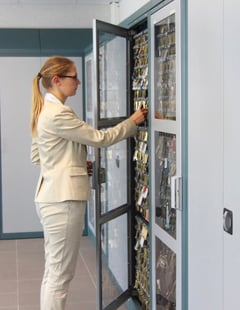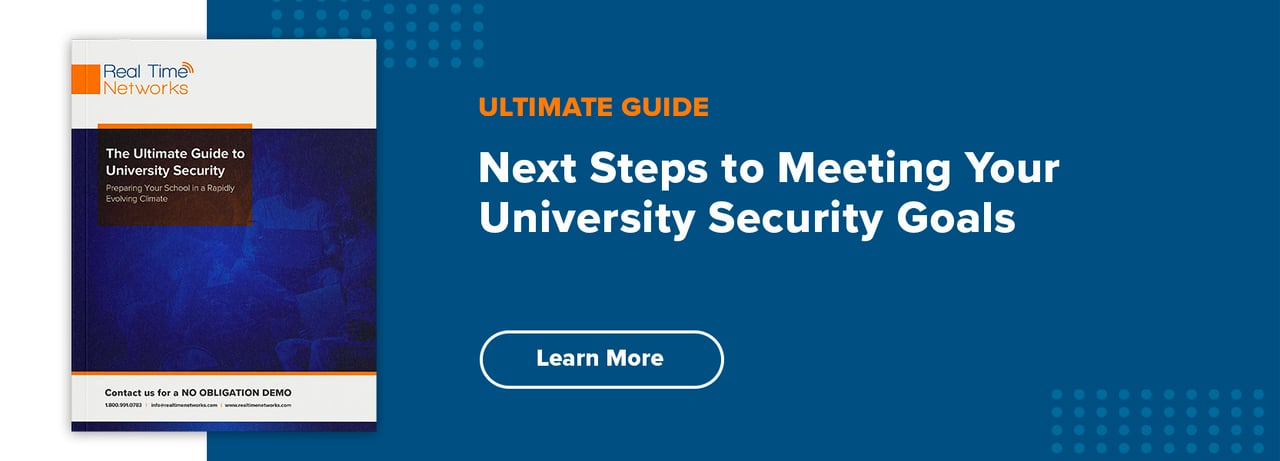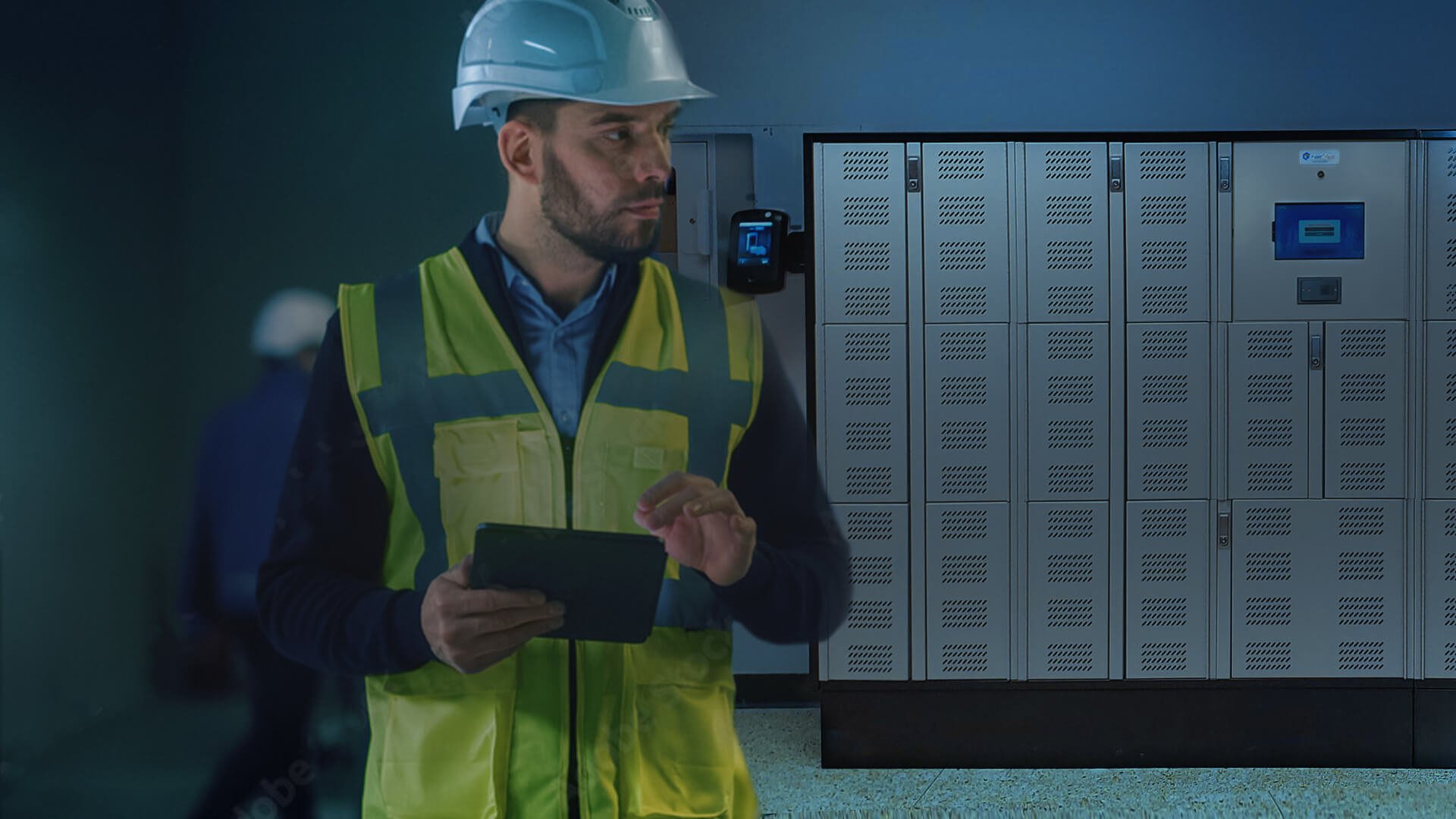By Jay Palter | January 28, 2022
Educational institutions struggle with many unique security challenges. Not many private industries have to worry about such large, open campuses. And most don’t have to worry about giving access to campus buildings and resources to such a wide range of people, including faculty, staff, and especially students.
Colleges, universities, and other educational institutions need a robust physical key management program to track and control people using keys. Real Time Networks has worked with many colleges and universities over the years, and we’ve collected a great deal of valuable information from them. This article details some of the most important things you’ll want to do when designing a reliable key management program for your institution.
Understand the Safety and Security Challenges You Face
All too often, an educational institute won’t take action on its key security until after a problem occurs. If they’re lucky, all that will have gone wrong is that someone lost a key, not a person getting hurt. But if that key was a submaster or master, then rekeying costs can still be substantial.
The College of William and Mary found this out the hard way. Several years ago, the master key for nearly all residential buildings went missing. There was no evidence that anyone stole this master key, but if a bad actor found it, they would have unrestricted access to almost every dorm and residential house on the campus. It cost the college over $500,000 to rekey every affected door and install an electronic key tracking system to ensure this security breach wouldn’t happen again.
An unexpected expense of that magnitude will considerably impact an educational institute’s budget and insurance rates. That is why they need to be proactive and think about their physical key security before a high-risk security incident occurs.
Best Practices for Designing a Higher Education Key Management Plan
Here are some essential tasks every college or university should undertake to improve their key security. This isn’t an exhaustive list. Instead, these are important steps we often see educational institutions overlook. Following these steps will help ensure you deploy your updated key management program as efficiently and cost-effectively as possible.
Start by setting your strategy
You need to start your planning process by making an important choice. Do you want to favor risk mitigation or efficiency in your program design? In other words, are you more concerned about preventing those high-impact emergencies, or do you want to favor improving the day-to-day operations that involve your physical keys? You don’t need to exclude one priority to choose the other if you’re using a smart electronic key system. If you favor risk mitigation, you’ll want to deploy a centralized key management system for better control. On the other hand, if you favor convenience, you’ll want to deploy a decentralized system with many satellite locations. Finally, if you’re managing a large campus, one thing to note is that a decentralized management system may complement the way you already have to work.
Determine whether you’ll manage building keys, fleet keys, or both
Often, educational institutes enter their key management design process thinking only about building or fleet keys—usually the category where they suffered their most recent, serious loss. But they should consider whether managing both major categories of institutional keys is worthwhile.Define the scope of what you want to manage at this stage. For example, colleges and universities with larger campuses often have many utility vehicles used by groundskeepers, facilities and maintenance crews, and the mailroom. Sports teams may have their own vans or buses as well. A smart key management solution can help track these vehicles, their maintenance histories, and better manage reservations.
 After defining scope identify stakeholders
After defining scope identify stakeholders
Once you know which departments and institutional processes you’ll affect by creating a new key management program, you'll identify which stakeholders you should bring into the planning process. You’ll likely want representatives from security, facilities, affected academic and athletic departments, and fleet managers. If your institution employs its own locksmiths, you’ll likely want someone specifically from that team to be represented as well.  Identify what type of management system you need
Identify what type of management system you need
Some smaller institutions might get by with manual key tracking processes. But most colleges, universities, and other educational institutions will want to consider whether a smart key management system will be more efficient and cost-effective in the long run. Consider the costs you face. Losing a master key is a low probability, high-cost event, but that risk still needs to be managed. Still, most colleges and universities are more likely to incur unnecessary costs from the day-to-day manual administration of a new key program they’re designing.
Educational institutes tend to have more staff turnover than other professional settings, thanks partly to the high volume of temporary and student workers they need to employ. As a result, their security depends partly on carefully managing transient workers' access to their keys and facilities.
Interested in learning more about how to create and execute a comprehensive key control policy?
Read The Ultimate Guide to Key Control, to learn more.
Think about future key storage needs
If you’re going to purchase a smart key management solution, you should plan ahead. We often have to tell customers that “the cost is in the box,” meaning the storage cabinets. The smart computer system can scale to any capacity. While key cabinets are modular and expandable, it’s more cost-effective to purchase them with future expansion in mind.That may sound obvious, but it is worth clarifying that if you plan to purchase a smart key tracking system, you only want to use this system for managing active keys. These are not systems for holding spare keys. When designing your new program only put actively-used keys for which you want to collect security and usage data inside an electronic key cabinet.
To determine placement, map your campus
Once a higher ed institute decides they need smart key cabinets, the first decision they usually get hung up on is deciding where the cabinets should be located. If you’ve opted to use one central management and distribution point, then this isn't a problem. But if you’re centralizing key storage for more responsive operations, then you need to think this through. One quick way to determine optimal locations that we recommend to customers is just to use Google Maps to calculate the walking times from your proposed storage locations to all corners of your campus. If you already know your budget for storage cabinets and the number you’ll likely end up deploying, you should be able to identify cabinet locations that balance travel times anywhere on your campus from that many points in a few minutes.
Consider your emergency needs
Even if your priority is improving day-to-day operations, key management should be part of your campus’ overall emergency preparedness plan. Look for a smart key management system that gives you the emergency response tools you need.Some systems enable remote network users to unlock keys over a secure connection. But that only works if network and power services are still available. Look for a system that supports remote and local power-free secure key release during emergencies.
Think about how to leverage system integration
Education institutes tend to face high turnover among workers, with a sizeable percentage of their workforce being student and temporary workers. Therefore, if your institution uses Active Directory or other directory services for its IT account management, then it might be worth integrating your key management user accounts with that broader organizational account system.Train everyone
By design, smart key management systems are intuitive to use. But your organization will get the most benefit from purchasing these systems if you thoroughly train all staff in their use. In addition, because a large portion of the value generated by these systems comes from their data collection, you’ll want to ensure that everyone who uses the system properly records all of the information that will feed the larger strategic decisions about key use you’ll want to make.
Be Prepared to Adapt
This might be the most important best practice of all, and it doesn’t just apply to key management. Education is constantly evolving. You need technology and management systems adaptable enough to see you through the long term, no matter what larger organizational changes are over the horizon.
Smart key management systems can help improve your institution’s operations. While deploying a key management system requires careful planning, it shouldn’t take over your entire budget cycle.

Want to find out if a smart key management system is right for your school?
Subscribe to our blog

Jay Palter
Vice President of Marketing & Partnerships






